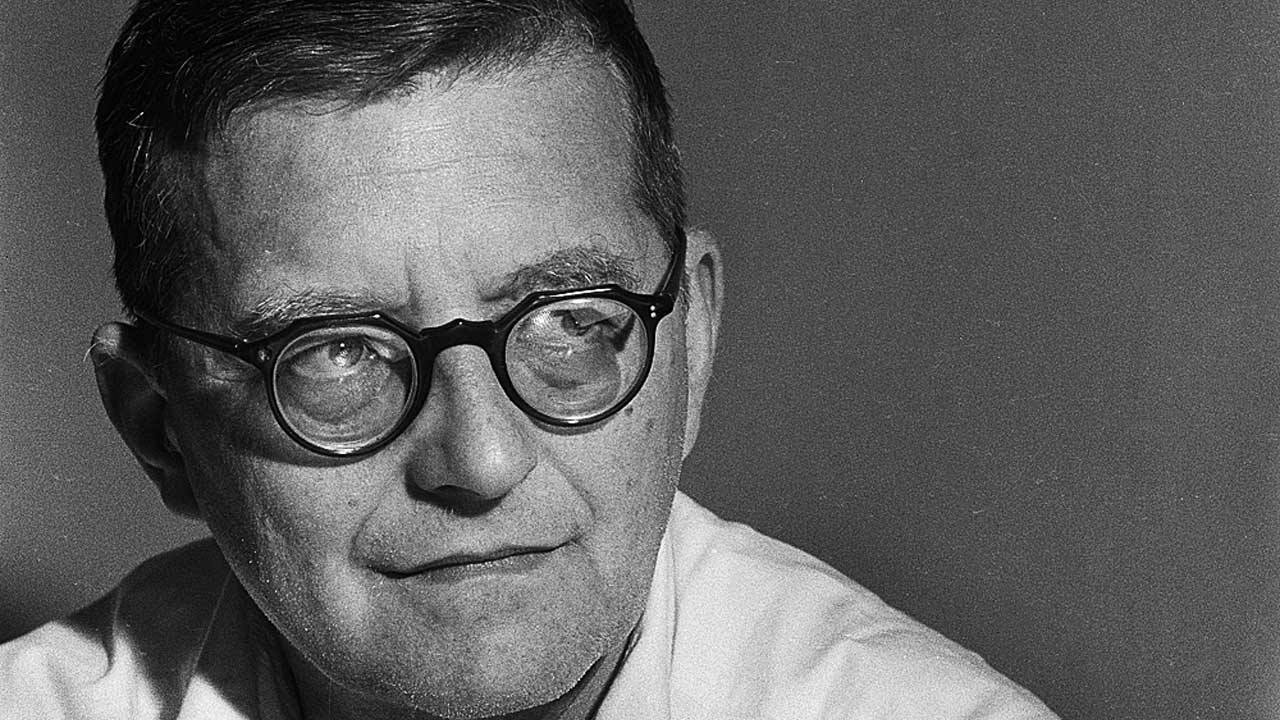Dmitri Shostakovich composed the String Quartet No. 3 in F Major in 1946 in the immediate aftermath of the Second World War. The previous year, his controversial Ninth Symphony shocked audiences and upset the Soviet authorities. It had not been the epic, monumental “victory” symphony everyone had been expecting. Instead, it was light, classical, seemingly frivolous music. Taken at face value, the Ninth Symphony delivered bright music filled with joie de vivre. On another level, it seemed mocking and sardonic.
Similar haunting ambiguities surround Shostakovich’s Third String Quartet. At the premiere, given by the Beethoven Quartet in Moscow in December of 1946, it was presented as a programmatic “war quartet.” Its five movements contained the subtitles, “Calm unawareness of the future cataclysm,” “Rumblings of unrest and anticipation,” “The forces of war unleashed,” “Homage to the dead,” and “The eternal question: Why? And for what?” Immediately after the performance, Shostakovich withdrew the subtitles, without explanation. The programmatic titles imply music appropriate for a propagandistic newsreel. Strangely, they seem designed to conceal the Quartet’s true depth and drama.
The first movement (Allegretto) begins with a jaunty melody in the violin. It suggests the kind of unpretentious tune which might be played in the street by a Jewish “Klezmer” fiddler. Yet, something sardonic seems to be lurking behind the cheerful facade. The second theme hauntingly echoes a motif from the first movement of the Ninth Symphony. The development section erupts into a wild double fugue in which the initial melody undergoes comic, almost cartoonish, contrapuntal development. As with the Ninth Symphony, this music seems to be taunting us with a clownish display of “serious counterpoint.” Amid boisterous frivolity, the coda brings the movement to a close.
The next two movements have been described as scherzos. The second movement (Moderato con moto) begins as a rigid, grotesque waltz. In the opening bars, the meter’s three pounding beats are enforced ferociously by the viola. Later, this unrelenting pulse becomes a hushed, ghostly whisper. The final chord drifts away amid a wrenching clash of major and minor sonorities.
Set in a grating G-sharp minor, the third movement (Allegro non troppo) is a wild dance in which the meter alternates between 2/4 and 3/4 time. It is propelled into motion by a primal ostinato which might remind you of a passage from Stravinsky’s The Rite of Spring. Shrieking with anguish, the instrumental voices enter into a ferocious conversation which anticipates the most hellish moments of Shostakovich’s Eighth String Quartet. The trio section is simultaneously ghoulish and comic.
The fourth movement (Adagio) begins with a bold musical announcement, in which the instruments are heard in octaves. It is a dramatic, yet bizarrely wandering, statement which seems to pay homage to Beethoven’s late string quartets. The movement continues as an ominous, halting passacaglia which dissolves, gradually, into a solemn funeral march.
The final movement (Moderato) begins without pause. It’s atmosphere is chilling and quietly numb. Gradually, themes from the previous movements return. Now, they take the form of ghostly recollections. In the final moments, the solitary, lamenting voice of the violin rises above a drone. It seems to ask the “eternal question.” As with Charles Ives, it remains an “Unanswered Question” as the final bar dies away.
Recordings
- Shostakovich: String Quartet No. 3 in F Major, Op. 73, Borodin String Quartet Amazon
- the Brodsky Quartet
- the Emerson String Quartet
- the Jerusalem Quartet (concert performance)
- the Borodin String Quartet (concert performance)


What a treasure, both in terms of the performance and the music. Thanks!